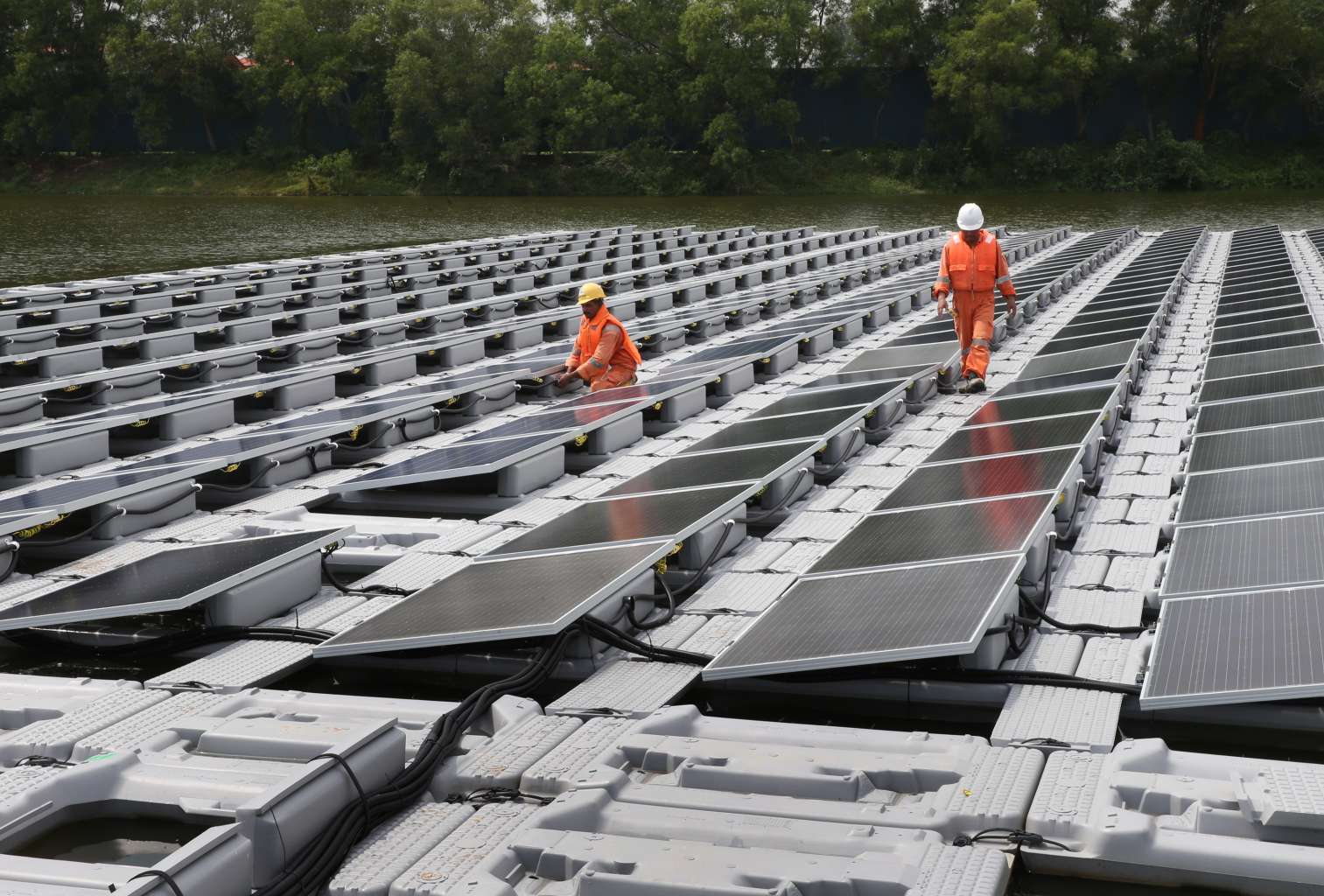World's largest floating solar photovoltaic cell test-bed launched in Singapore
Sign up now: Get ST's newsletters delivered to your inbox

The test-bed will study the environmental impacts of such systems on the reservoir and also features the currently largest floating PV system with active water cooling.
ST PHOTO: LAU FOOK KONG
Samantha Boh
Follow topic:
SINGAPORE - The world's largest floating solar photovoltaic cell test-bed measuring 1ha and containing 10 different solar photovoltaic systems was launched on Tuesday (Oct 25) by Minister for the Environment and Water Resources Masagos Zulkifli.
The $11-million test-bed - the size of about 100 five-room Housing Board flats located at Tengeh Reservoir in Tuas - will, over the next six months, be used to study the performance and cost-effectiveness of the various systems.
Speaking at the Asia Clean Energy Summit held at the Sands Expo and Convention Centre, Mr Masagos said that being sustainable should not be considered as an alternative or a trade-off to economic development.
"Rather, the pursuit of clean and renewable energy development is a venture into greater opportunities and growth, and also a necessary step into the green era," he said.
Each solar photovoltaic system has a capacity of 1 kilowatt peak and will be studied with some 100 sensors and the results pitted against one another. The floating system will also be compared against a 20 kilowatt peak roof-top system that has been constructed in the vicinity of Tengeh Reservoir.
Eventually, the two best-performing floating solar photovoltaic systems will be chosen and placed on a larger trial of 2 megawatt peak capacity.
The test-bed is an initiative by the Economic Development Board (EDB) and national water agency PUB. The scientific evaluation of the various solar photovoltaic systems will be conducted by the Solar Energy Research Institute of Singapore (Seris).
Examples of systems being tested include one that uses bi-facial solar cells which allow sunlight to enter from both sides, and another that has an "active cooling" feature where water is pumped onto the solar cells to cool them down to improve their performance.
PUB will also study the environmental impact on the reservoir. This includes the impact on water quality and biodiversity of the reservoir as a result of the photovoltaic installations.
Floating solar photovoltaic cells are becoming an increasingly attractive way for Singapore to harness sunlight due to limitations in roof space, and also for their higher performance.
Previous research suggests that they can be up to 20 per cent more efficient than roof-top systems in tropical countries, and 5 per cent more efficient in temperate countries.
This is brought on by cooling effects provided by the water body the solar panels are floating on.
"As a highly dense city state with limited space for solar deployment, Singapore is placing emphasis on building up urban solar capabilities which include floating solar as a key focus area. Singapore is also positioned as a living lab for companies to test and commercialise innovative urban solutions," said Mr Goh Chee Kiong, executive director for cleantech at EDB.
"We are confident that the floating photovoltaic test-bed will serve as an important reference for local and international companies to scale up their solar technologies for global markets," he said.
EDB has also recently secured five new investments across the fields of solar, microgrids, smart grids and energy management in Singapore worth a total of $50 million in cumulative business expenditure over the next five years.

